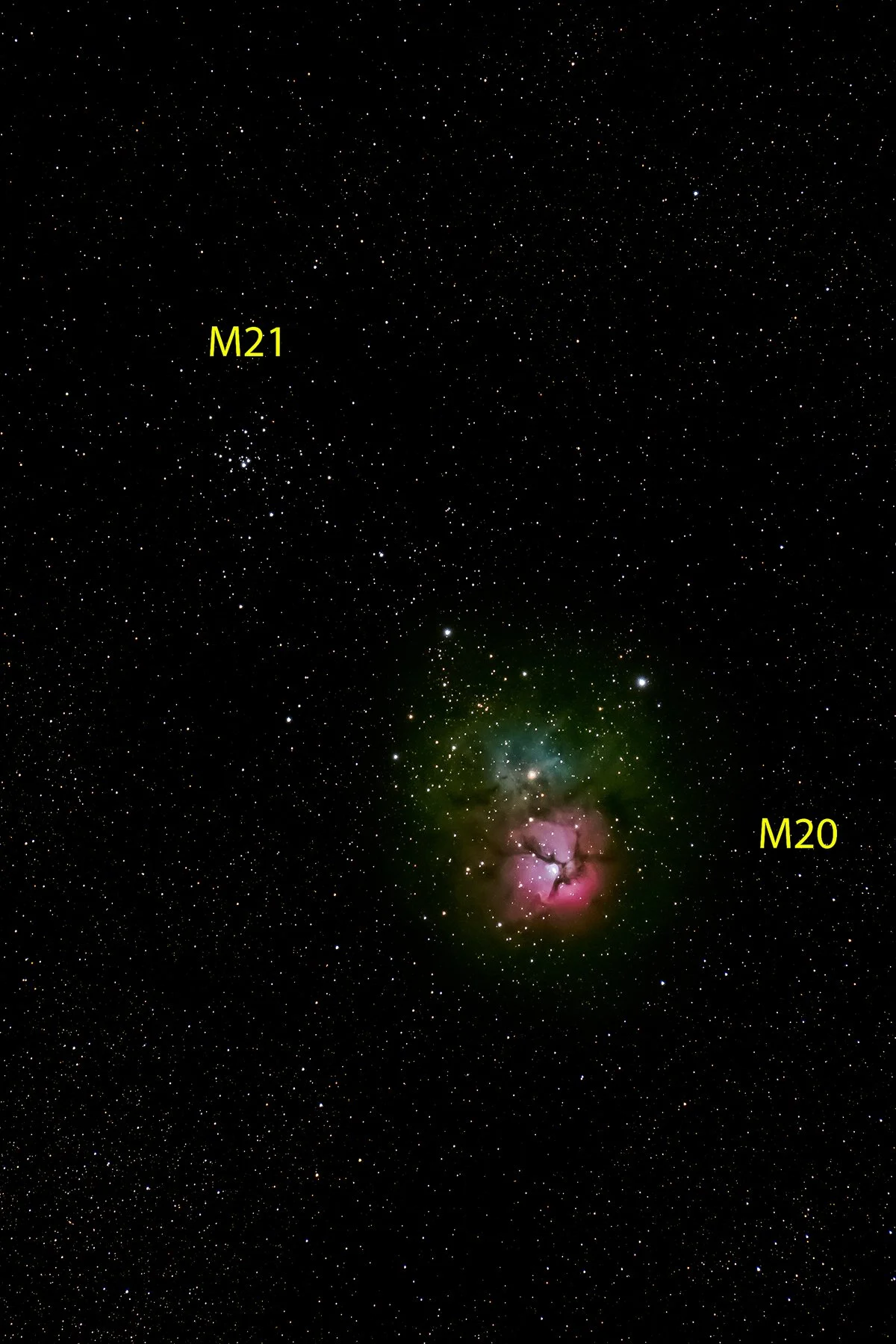M21 - Open Star Cluster
Type: Open Star Cluster
Discoverer: Messier, 1764
Size: 20 ly
Distance: 3930 ly
Constellation: Sagittarius
My Notes: On July 26, 2022, I captured M21 at Merritt Reservoir near Valentine, Nebraska. This nebula can be seen in the same field of view as M20 with my 600mm (918eq) lens.
(The following is the same for M8, M17, M18, M20, & M21) This was the first time using my iOptron CEM26 goto mount and my Fujinon 150-600mm lens. After struggling to capture the first 17 images of this collection using an iOptron Skyguider Pro, I picked up the CEM26. I was waiting hours trying to adjust the field of view using the Skyguider. While I made it work, it wasn’t really designed for deep-sky objects. As such, I could only get about one object each night because it took so long to find it, get it in view, and focus on it. Using this CEM26 let me capture five objects in the same amount of time. It is a real improvement to the practice and made for a much more enjoyable night, though I did miss the hunt that usually comes from trying to locate the objects myself, which I understand makes up a lot of the fun for people with Dobsonian telescopes. Regarding the lens, it also made a huge difference. The internal zoom and focus meant that the lens did not drift as gravity affected it. Focusing was much easier, and it stayed focused longer as the temperatures shifted.
Messier Notes: (June 5th, 1764) ‘Star cluster near M20… The stars of both clusters are 8-9 mag. and enveloped in nebulosity.’
Smyth ‘A course cluster of telescopic stars in a rich gathering galaxy region. Messier included some outliers in his description and what he mentions as nebulosity must have been the grouping of minute stars in view.’
18 Frame Stack - mean - 60 sec at f/10 600mm (918eq) ISO 6400 Fujifilm X-T4 XF150-600F5.6-8
M20 & M21 in the same field of view

